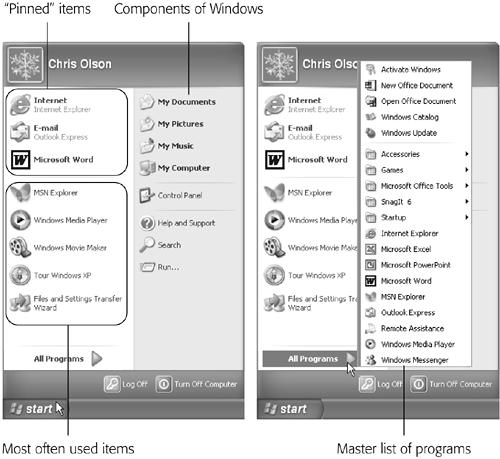The Start Menu
Windows XP is composed of 40 million lines of computer code, scattered across your hard drive in thousands of files. The vast majority of them are support files, there for behind-the-scenes use by Windows and your applications. They’re not for you. They may as well bear a sticker saying, “No user serviceable parts inside.”
That’s why the Start menu is so important. It lists every useful piece of software on your computer, including commands, programs, and files. You can use the Start menu to open your applications, install new software, configure hardware, get help, find files, and much more.
When you click the Start button at the lower-left corner of your screen, the Start menu pops open, shooting upward. Its contents depend on which options you (or your computer’s manufacturer) have put there; Figure 2-4 illustrates an example. The new, multi-column structure of the Start menu is one of the most radical developments in Windows XP.

Figure 2-4. Left: In Windows XP, the Start menu is divided into several distinct sections. The top left section is yours to play with. You can “pin” whatever programs you want here, in whatever order you like. The lower-left section lists the programs you use most often, according to Windows XP’s calculations. (You can delete individual items here but you can’t add items manually or rearrange them.) The right-side column provides direct access ...
Get Windows XP Professional: The Missing Manual now with the O’Reilly learning platform.
O’Reilly members experience books, live events, courses curated by job role, and more from O’Reilly and nearly 200 top publishers.

